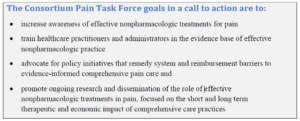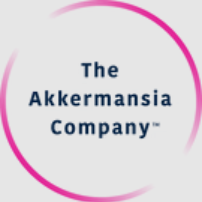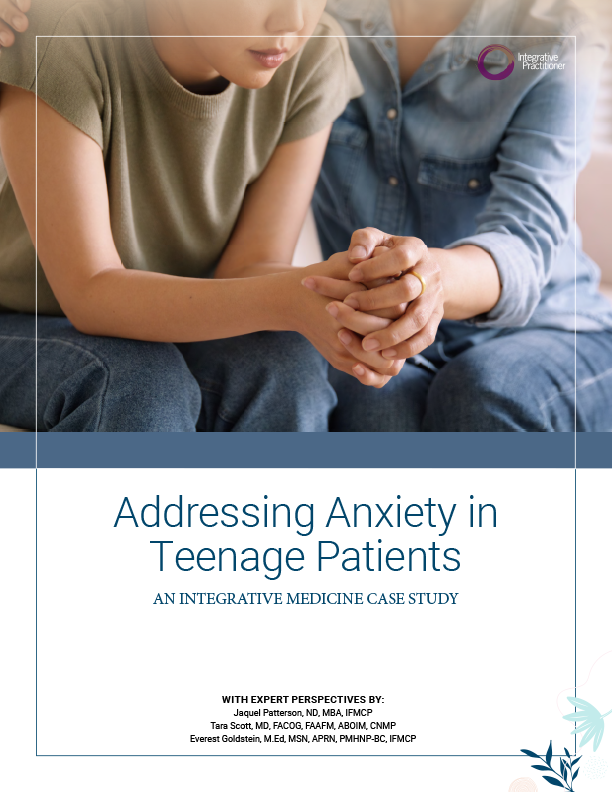Integrative Consortium weighs into U.S. pain mess with evidence and action toward comprehensive pain care
By John Weeks
 by John Weeks, Publisher/Editor of The Integrator Blog News and Reports
by John Weeks, Publisher/Editor of The Integrator Blog News and Reports
Editor’s note: This analysis article is not edited and the authors are solely responsible for the content. The views and opinions expressed in this article are those of the authors and do not necessarily reflect the official policy or position of Integrative Practitioner.
A growing list of powerful agencies are leading US medicine toward the idea of non-pharmacologic approaches for chronic pain. Now, in a 75-page white paper with over 450 footnotes, the Academic Consortium for Integrative Medicine and Health is trying to teach them how to drink.
Not a moment too soon. On January 1, 2018, all US hospitals and other medical delivery organizations accredited by the Joint Commission must have non-pharma strategies for pain treatment.
The white paper is entitled “Evidence-Based Nonpharmacologic Strategies for Comprehensive Pain Care: The Consortium Pain Task Force White Paper.” The lead authors are long-time integrative and interprofessional pain medicine clinician Heather Tick, MD and acupuncturist-researcher Arya Nielson, PhD, LAc. Tick holds an endowed integrative pain chair at the University of Washington. Nielsen is associated with Mt. Sinai and Albert Einstein School of Medicine.
 Tick shares excitement the paper’s initial reception to the paper from colleagues in the mainstream of pain care. She quotes an e-note from one: “This is a comprehensive report that is super useful.”
Tick shares excitement the paper’s initial reception to the paper from colleagues in the mainstream of pain care. She quotes an e-note from one: “This is a comprehensive report that is super useful.”
While multiple pain journals were reportedly interested in publishing the document, the authors were more interested in the practical impact. They wanted it available now as the Joint Commission’s new rule comes into play rather than wait upon a journal’s publication schedule. “It would have been May before it was all out.” Their effort was geared toward “produc(ing) a document that was easy to trust and implement” for mainstream delivery organizations.
The power of the report is partly in the credibility of its sponsor: the task force of a 72-institution consortium whose academics were comfortable with the science-supported recommendations. To the federal government: “Currently, there is evidence of effectiveness, cost-effectiveness, cost-savings and risk mitigation for evidence-based nonpharmacologic options.” The website for the paper notes that 37 state Attorneys General have appealed to the America’s Health Insurance Plans asking them to include and incentivize evidence-based non-opioid treatments for pain.” The white paper pushes the states to act: “Policy should require private insurers to cover evidence-informed nonpharmacologic therapies for acute and chronic pain.”
The Pain Task Force of the Academic Consortium for Integrative Medicine and Health Task Force also includes, besides Tick and Nielsen: Kenneth R. Pelletier, PhD, MD (hc), Robert Bonakdar, MD; Samantha Simmons, MPH, Ronald Glick, MD, Emily Ratner, MD, Russell L. Lemmon, MD, Peter Wayne, PhD, Veronica Zador, BSc.
 Tick, who has pioneered interprofessional team care over the past 25 years, reflected on the preponderance of MDs on the team: “It’s a little top-heavy.” Then she explains: “In medicine, we look back over 30 years at pain care and we’ve had a terrible record and it’s not been well-acknowledged by medical practitioners. We [MDs] need to look at the cost in terms of lives wasted and health damage. We do that in this white paper. We [MDs] need to be the ones owning that.”
Tick, who has pioneered interprofessional team care over the past 25 years, reflected on the preponderance of MDs on the team: “It’s a little top-heavy.” Then she explains: “In medicine, we look back over 30 years at pain care and we’ve had a terrible record and it’s not been well-acknowledged by medical practitioners. We [MDs] need to look at the cost in terms of lives wasted and health damage. We do that in this white paper. We [MDs] need to be the ones owning that.”
The table of contents highlights the focus on safety. “There’s this mistrust [by some in medicine] of non-pharmacologic approaches, like herbs and acupuncture needles,” explains Tick. One by one evidence of harm from approaches such as acupuncture, massage, spinal manipulation, yoga and mind-body is reported. “There is just no comparison of the safety profiles.” She points to those from non-steroidal inflammatory medications: “The harm is not only opioids.”
Tick says that what is effectively an evidence-driven outspoken advocacy toward a new, comprehensive model for pain treatment is not being challenged: “Not even my conventional colleagues were up in arms. They agree we all need a kick in the butt.”
For Tick this is life work. “It’s my raison d’ etre,” she says. In recent years Tick’s contributions have been many. She published a book for lay people, Holistic Pain Relief and was a co-author (also with Nielsen and others) on the influential Never-Only-Opioids policy brief. She served as faculty for an integrative pain project at Samueli Institute, developed competencies in integrative pain care, and recently co-authored a paper with former US Army Surgeon General Eric Schoomaker, MD, PhD.
When the Consortium set up its Task Force in late 2016, Tick was a natural to lead. In her partnership with Nielsen on the paper, she not only had a person who, with their colleague Marsha Handel, MLS, was skilled at doggedly chasing down the right citations. She was also teamed with the person credited with prompting the Consortium to urge the Joint Commission to make changes in their pain standards to reflect more recent evidence supporting non-pharmacologic approaches.
Interestingly, the document does not put “integrative” in the document’s title. Explained Tick: “I’ve always said my goal is not ‘integrative medicine” – it’s just to have it be good medicine.” She thinks the time may be here in pain care. She is determined to create the broadest distribution of this white paper to help make that transition stick.
This is the second pain-related document tool with which the Consortium has been involved that has been released in recent months. The first was the one-page Moving Beyond Medications, developed with three partner organizations. Did the consider developing this through a similar collaborative effort?
Tick spoke to the challenges in working with the team she had – “it’s hard enough to write a paper by committee.” Bringing in personnel, perspectives and organizational processes from additional organizations would have made the time-frame she and Nielsen had set impossible. She sees many opportunities ahead for future collaborations.
















